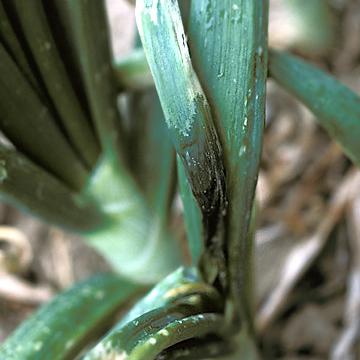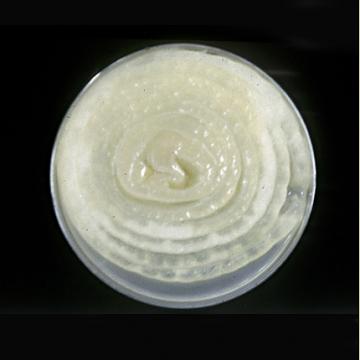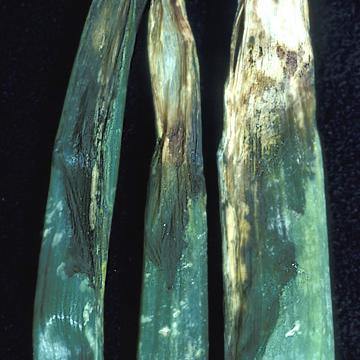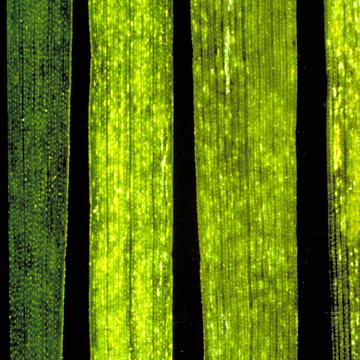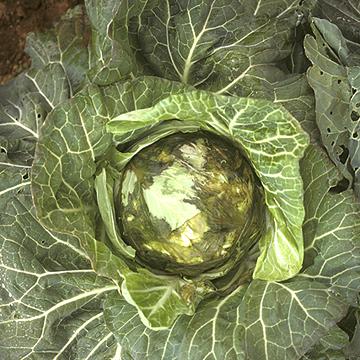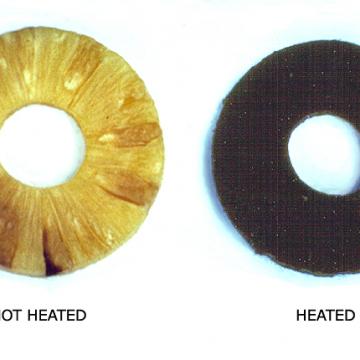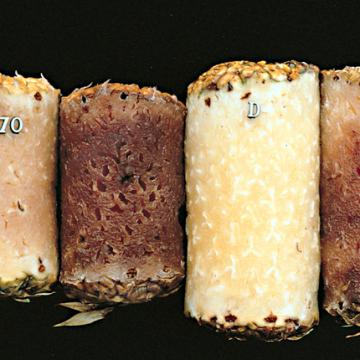DISEASE: Bacterial flower stalk and leaf necrosis
HOST: Onion
Dark, rotted areas of stalk and leaves caused by systemic invasion of the pathogen.
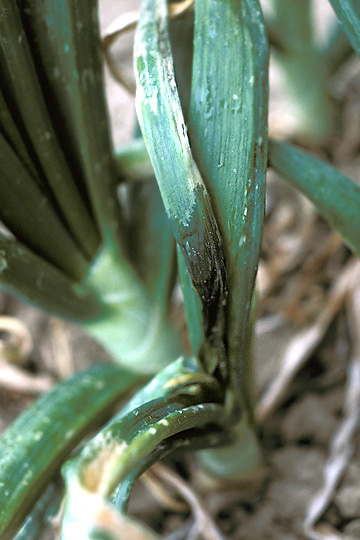
Bacterial flower stalk and leaf necrosis | Onion
DISEASE: Bacterial flower stalk and leaf necrosis
HOST: Onion (Allium cepa)
PATHOGEN: Pseudomonas marginalis pv. marginalis
SOURCE: S. Mohan
DISEASE: Bacterial flower stalk and leaf necrosis
HOST: Onion
Gray-brown rot of onion after inoculation. Disease starts as small, water-soaked lesions that later develop into slimy, gray-brown rot. The disease progresses downward from the stalk and may rot the entire bulb.
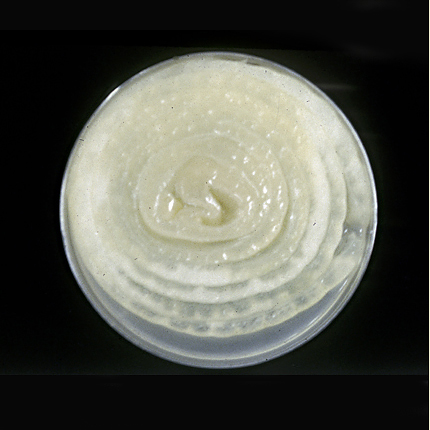
Bacterial flower stalk and leaf necrosis | Onion
DISEASE: Bacterial flower stalk and leaf necrosis
HOST: Onion (Allium cepa)
PATHOGEN: Pseudomonas marginalis pv. marginalis
SOURCE: R. Gitaitis
DISEASE: Bacterial flower stalk and leaf necrosis
HOST: Onion
Leaves with necrosis and rot. The common name for this disease is the same as those used for two other diseases. Also, another common name for this disease is bacterial soft rot.
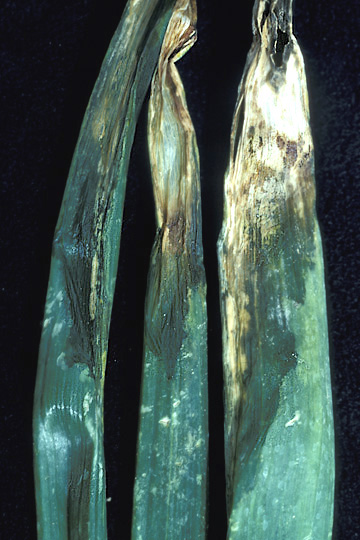
Bacterial flower stalk and leaf necrosis | Onion
DISEASE: Bacterial flower stalk and leaf necrosis
HOST: Onion (Allium cepa)
PATHOGEN: Pseudomonas marginalis pv. marginalis
SOURCE: S. Mohan
DISEASE: Bacterial mosaic
HOST: Wheat
Diseased leaves with mosaic pattern exhibiting various amounts of yellowing. Leaves were artificially inoculated by vacuum infiltration.
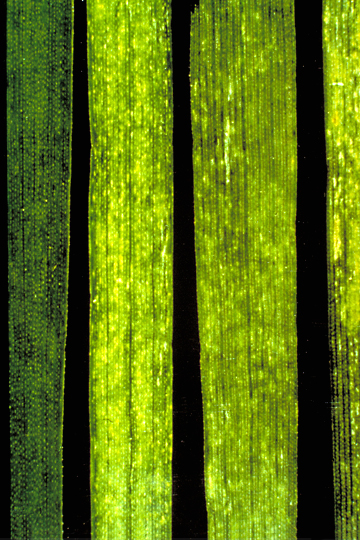
Bacterial mosaic | Wheat
DISEASE: Bacterial mosaic
HOST: Wheat (Triticum aestivum)
PATHOGEN: Clavibacter michiganensis subsp. tessellarius
SOURCE: A. Vidaver
DISEASE: Bacterial soft rot
HOST: Cabbage
Rot of cabbage caused by Pseudomonas marginalis pv. marginalis. Rot caused by P. viridiflava has similar symptoms of water-soaking and blackening of cabbage heads. Both diseases occur mainly during the winter season.
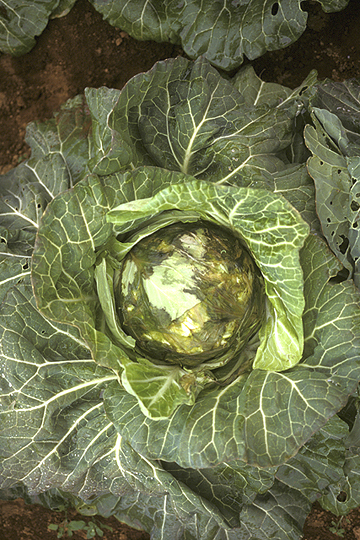
Bacterial soft rot | Cabbage
DISEASE: Bacterial soft rot
HOST: Cabbage (Brassica oleracea var. capitata)
PATHOGEN: Pseudomonas marginalis pv. marginalis
SOURCE: M. Goto
DISEASE: Pink disease
HOST: Pineapple
Infected pineapple slices; effect of heating (right) and not heating (left).
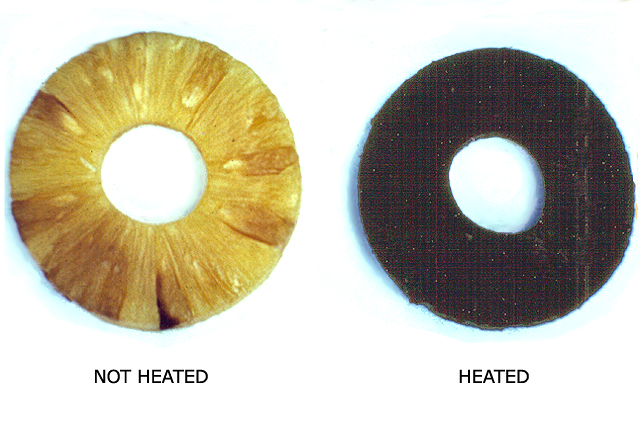
Pink disease | Pineapple
DISEASE: Pink disease
HOST: Pineapple (Ananas comosus)
PATHOGEN: Tatumella citrea
PATHOGEN SYNONYM: Pantoea citrea
SOURCE: K. Rohrbach, A. Alvarez
DISEASE: Pink disease
HOST: Pineapple
Two clones (A and D) showing different stages of infection. Second and fourth fruits (left to right) have been heated. Disease originally attributed to Gluconobacter oxydans and Enterobacter agglomerans and later to Pantoea citrea.
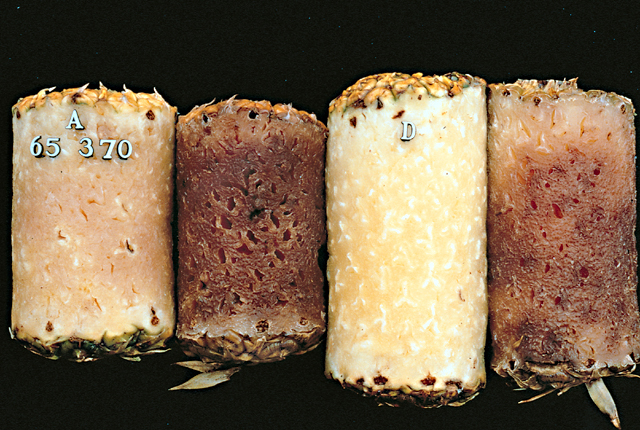
Pink disease | Pineapple
DISEASE: Pink disease
HOST: Pineapple (Ananas comosus)
PATHOGEN: Tatumella citrea
PATHOGEN SYNONYM: Pantoea citrea
SOURCE: K. Rohrbach


